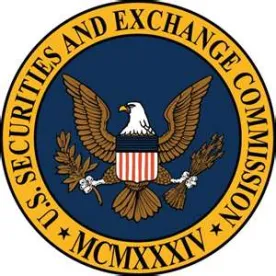On July 1, 2015, the Securities and Exchange Commission (SEC) proposed rules relating to compensation clawback policies. The rules, if adopted, would implement the requirements of Section 954 of the Dodd-Frank Wall Street Reform and Consumer Protection Act of 2010 (Dodd Frank) by directing national securities exchanges and associations, such as the NYSE and Nasdaq, to adopt listing standards that would require listed companies to develop and implement compensation clawback policies.
Under the proposed rules, listed companies would be required to have written compensation clawback policies that require the recoupment of certain incentive-based compensation received by current or former executive officers. The listing standards would also require companies to make certain disclosures about their clawback policies. The listing standards would generally apply to all issuers with a class of securities listed on a national securities exchange or association, including foreign private issuers, controlled companies, smaller reporting companies and emerging growth companies.
Executive Summary
- The proposed rules would require the clawback policy to be triggered by an accounting restatement required to correct an error that is material to previously issued financial statements
- The policy would apply to incentive-based compensation received by current or former executive officers during the three (3) fiscal years preceding the date on which the issuer is required to prepare the accounting restatement
- Incentive-based compensation subject to the clawback would include compensation received due to achievement of a goal based on accounting principles or on stock price or total stockholder return (TSR). Stock options that are granted, earned and vested based solely on continued employment would not be subject to the policy
- The amount of the recovery would be the excess of the amount of incentive-based compensation the executive officer actually received over the amount the executive officer would have received based on the restated numbers, determined on a pre-tax basis. Where the incentive compensation is based on stock price or TSR, reasonable estimates could be used to calculate the excess amount
- It would not be relevant whether there is any fault on the part of the executive officer who received the compensation or whether the officer was involved in preparing the financial statements subject to the restatement
- The issuer would be required to enforce the clawback policy except in narrowly defined exceptions: generally only where the cost of enforcement would exceed the amount of the recovery or the recovery would be illegal under home country law
- Issuers would not be allowed to indemnify officers or pay for insurance to cover clawback amounts
- The issuer would need to file its clawback policy as an exhibit to its annual report, and issuers would be required to disclose certain information about their enforcement of their clawback policies in proxy statements, information statements and Forms 10-K in specified circumstances
Required Elements of the Clawback Policies
The clawback policies mandated by the proposed rules would have to meet various requirements as to their scope and application, as summarized below.
1. Type of Restatement Triggering Recovery of Compensation. Under the proposed new Rule 10D-1, the clawback policy would be triggered when an issuer is required to prepare an accounting restatement due to material noncompliance with any financial reporting requirement under the securities laws. A restatement would be considered “due to material noncompliance” if it is required to correct an error that is material to previously issued financial statements.
Rule 10D-1 does not further define materiality, but the adopting release advises that issuers should consider whether a series of immaterial error corrections, whether or not resulting in filed amendments to financial statements, could be considered a material error in the aggregate.
Consistent with accounting standards, certain changes would not constitute an error correction, including the following: retrospective applications or a change in accounting principle; retrospective revisions to reportable segment information due to a change in internal organization structure; retrospective reclassification due to a discontinued operation; retrospective application of a change in reporting entity; retrospective adjustment to provisions amounts in connection with a prior business combination; and retrospective revision for stock splits.
2. Definition of “Incentive-Based Compensation” Subject to Recovery. Under Rule 10D-1, the clawback policy would be required to apply to “incentive-based compensation.” Incentive-based compensation would be defined as compensation that is granted, earned or vested based wholly or in part upon the attainment of a “financial reporting measure.” A “financial reporting measure” would mean a measure that is determined and presented in accordance with the accounting principles used in preparing financial statements, any measures derived from such measures, and stock price and total stockholder return (TSR).
The clawback policy would not apply to discretionary bonuses or any compensation that is earned solely on the basis of continued employment. Accordingly, stock options that are granted, earned and vested solely on the basis of continued employment would not be subject to the clawback policy, despite Dodd-Frank’s specific reference to “stock options awarded as compensation” and the fact that time-vesting stock options are eligible to qualify as performance-based compensation under Section 162(m) of the Internal Revenue Code of 1986 (Code). Only options that are granted, earned or vested based on an accounting, stock price or TSR measure would be subject to the clawback under the rules as proposed.
3. Time Periods Covered. The clawback policy would apply to incentive-based compensation “received” during the three fiscal years preceding the date on which the issuer is required to prepare the accounting restatement. Compensation would be deemed “received” when the performance condition is satisfied, even if the compensation is not actually paid or granted until a later date. The date on which the issuer is required to prepare the accounting restatement would be the earlier of (a) the date the board, committee or authorized officer concludes, or should reasonably have concluded, that previously issued financial statements contain a material error or (b) the date a court, regulatory or other authorized body orders a restatement to correct a material error.
4. Individuals Covered. The clawback policy would apply to any individual who served as an executive officer at any time during the performance period that applied to the incentive-based compensation that the individual received. Accordingly, the policy would apply to both current and former executive officers. Rule 10D-1 uses a definition of “executive officer” similar to the definition under Section 16 of the Securities Exchange Act of 1934 (Exchange Act), rather than the definition of “executive officer” under Rule 3b-7 under the Exchange Act. This definition generally includes the issuer’s president, principal financial officer, principal accounting officer (or, if none, the controller), any vice-president in charge of a principal business unit, division or function, and any other officer who performs a policy-making function, or any other person who performs similar policy-making functions.
It will not be relevant whether there is any fault on the part of the officer or whether the officer was involved in preparing the financial statements. Companies would not be able to indemnify officers or pay for insurance to cover amounts that are clawed back.
5. Amount of Recovery. The amount of the recovery would be the excess of the amount of the incentive-based compensation the executive officer actually received over the amount the executive officer would have received based on the restated numbers. Where the incentive compensation is based on stock price or TSR, reasonable estimates can be used to calculate the excess amount. The amount of the recovery would be calculated on a pre-tax basis, but, in the case of equity awards, would be calculated net of any exercise price paid by the executive.
For cash awards paid from bonus pools funded by the achievement of a financial performance measure (a structure frequently used for purposes of Code Section 162(m) compliance), if the actual bonuses awarded had been reduced from the maximum permitted by the overall size of the pool and the bonus pool amount based on the restatement was large enough to cover the reduced bonuses, then no amount would need to be recovered. If recovery is required from amounts paid under a bonus pool where the individual awards are determined on a discretionary basis, then the recovery must be implemented on a pro rata basis according to the size of the individual awards; discretion is not permitted as to the amount recovered from individuals. Amounts recovered from the executive under Section 304 of the Sarbanes-Oxley Act of 2002 would be credited as a reduction in the amount required to be recovered under the Rule 10D-1 clawback. The rule proposal did not provide guidance on determining the recoverable amount of supplemental retirement plan benefits that are calculated in part on compensation that is subject to the clawback, but asked for comment on whether further guidance is needed. The rule also did not discuss how to apply the clawback to amounts deferred into a nonqualified deferred compensation plan.
6. Recovery Mandatory Unless Impracticable. Under proposed Rule 10D-1, recovery of incentive-based compensation subject to the clawback would be mandatory unless it is “impracticable.” For U.S. companies, recovery would be considered impracticable only if the direct costs of enforcing recovery would exceed the recoverable amounts. A determination of impracticability could be made by the issuer’s board of directors only after making a reasonable attempt to recover the compensation, documenting the recovery attempts and providing the documentation to the stock exchange on which the issuer’s stock is listed.
For companies whose home country law is not U.S. law, recovery would be considered impracticable if the recovery would be illegal under home country law. The determination of illegality would need to be based on a legal opinion from home country counsel as to illegality, and the illegality must be based on home country law as it existed prior to the publication of the proposed clawback rule in the federal register.
Recovery would not be considered impracticable solely on the basis of inconsistency between existing compensation contracts and the rules. The proposing release suggests that issuers may be able to implement their clawback policies with respect to existing compensation arrangements and agreements through amendments to their bylaws.
The proposing release indicates that issuers would be permitted to exercise discretion as to the means of recovery. The recovery, however, must be effectuated reasonably promptly, with the applicable stock exchange determining whether the steps taken constitute compliance with the clawback policy. The proposing release did not indicate what would be considered “reasonable promptness” and asked for comment on that subject.
Clawback Policy Disclosures
The proposed rules would include several disclosure requirements relating to the clawback policy. An issuer’s compliance with the disclosure requirements would be an element of the listing standards under the proposed rules.
1. Filing of Clawback Policy. The issuer would need to file the clawback policy as an exhibit to its annual report on Form 10-K.
2. Proxy Statement/Annual Report Disclosures. The proposed rules would amend Item 402 of Regulation S-K to require disclosure by listed issuers if at any time during the last completed fiscal year either (a) a restatement that required recovery was completed or (b) there was an outstanding balance of excess incentive-based compensation attributable to a prior restatement.
The required disclosure under Item 402 would include:
-
For each restatement, (a) the date on which the issuer was required to prepare the restatement, (b) the aggregate dollar amount of excess compensation attributable to the restatement, (c) the aggregate dollar amount of excess compensation that remains outstanding at the end of the last year and (d) if the excess compensation was based on a stock price or TSR performance measure, the estimates used to calculate the amount of the excess compensation
-
If the issuer decided not to pursue recovery during the last fiscal year from any individual, the name of each individual, the amount foregone and a brief description of the reason the issuer decided not to pursue recovery
-
The name of each individual who had outstanding unrecovered excess compensation at the end of the last fiscal year that had been unpaid for 180 days or longer, as well as the amount of such compensation
If the amount of excess compensation has not yet been determined, that fact must be disclosed along with an explanation. As long as an issuer provides the new Item 402 disclosure with respect to clawbacks, the issuer need not also make a disclosure under Item 404(a) relating to related party transactions with respect to the clawback activity.
The Item 402 disclosure would need to be provided in XBRL format, but would be required only in annual reports on Form 10-K and proxy and consent solicitation materials whenever other Item 402 disclosure is required. The disclosure, therefore, would not be required in registration statements under the Securities Act of 1933. In addition, the disclosure would not be deemed incorporated by reference into any filing under the Securities Act of 1933 unless specifically incorporated by reference.
For any registered management investment company subject to Rule 10D-1, information mirroring the new Item 402 disclosure would be included in annual reports on Form N-CSR and in proxy statements and information statements relating to the election of directors. Foreign private issuers would be required to provide the new Item 402 disclosure in annual reports filed with the SEC under Section 13(a) of the Exchange Act.
The Summary Compensation Table rules would be amended to require that any amounts recovered under a clawback policy reduce the amount reported in the table for the fiscal year in which the original payment was reported and be identified in a footnote.
Timing of the New Rules
Under the proposed rules, the stock exchanges would have to file with the SEC proposed listing standards implementing the rule no later than 90 days after the final Rule 10D-1 is published in the federal register. Those new listing standards would need to be approved by the SEC and become effective no later than one year after the publication of the final new Rule 10D-1.
Issuers then would need to adopt clawback policies no later than 60 days after the exchanges’ standards become effective. These clawback policies would need to apply to all incentive-based compensation received by current or former executive officers as a result of attainment of a financial reporting measure based on or derived from financial information for any fiscal period ending on or after the effective date of Rule 10D-1. The clawback policy would be expected to apply to such compensation even if the compensation is received under a pre-existing contract or arrangement.
Compliance with the new Item 402 disclosure rules would be required for all applicable filings with the SEC after the effective date of the exchanges’ listing standards.
Recommended Actions for Listed Companies
-
Review any existing clawback policies to determine what revisions would be needed if the proposed rules are adopted
-
Review existing incentive-based compensation arrangements and any other plans or agreements that are affected by incentive compensation, such as deferred compensation plans or supplemental executive retirement plans, to determine whether there is an existing contractual right to recover compensation and consider whether to modify the arrangements to permit recovery in the future
-
Consider commenting on the proposed rules during the 60-day comment period beginning after the proposed rules are published in the federal register.





 />i
/>i

